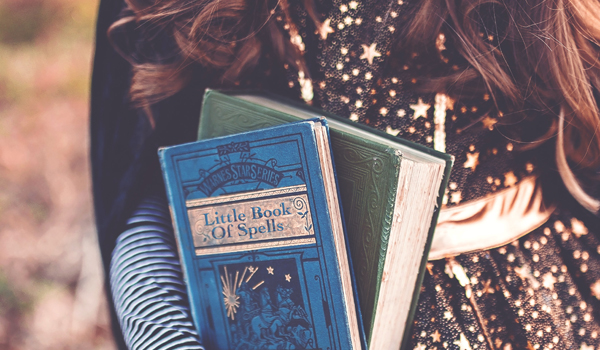This resource is great for:
Delving deeper into character study and thinking about the historical contexts of texts.
Introduction
Witches have featured in literature for hundreds of years. We’re looking at how different authors present witches and how those presentations are markers of our ever-changing world.
“This is not a fairy-tale. This is about REAL WITCHES. Real witches don’t ride around on broomsticks. They don’t even wear black cloaks and hats. They are vile, cunning, detestable creatures who disguise themselves as nice, ordinary ladies. So how can you tell when you’re face to face with one? Well, if you don’t know yet you’d better find out quickly – because there’s nothing a witch loathes quite as much as children and she’ll wield all kinds of terrifying powers to get rid of them.”
– Roald Dahl, The Witches
Part one
Let’s think about the traditional view of witches, the outfit that children wear when dressing up on Halloween: pointed hat, pointed nose, black cloak and black cat.
What is it about these witches that are we supposed to find scary? Where do you think these ‘scary’ ideas came from?
If we go back centuries to Homer’s ancient text The Odyssey written in the 8th century BC, we can see how the evil witch Circe is presented when she attacks Odysseus’ sailors. During his long ten-year journey back home from war Odysseus and his men come across the deserted island where Circe lives. She tricks and drugs his group of sailors and turns them into pigs.
Read this extract where the sailors come up to Circe’s house and see how she works her magic.
Highlight all the parts of this text that make Circe seem supernatural or evil. Then answer these questions:
- Do you think the sailors were scared before they met Circe?
- Did they have reason to fear her before they saw her?
- Why do you think Circe turned them into pigs?
- Who is the most powerful in this situation, Circe or the sailors?

Part two
Let’s look at the reaction to witches on a wider scale. What do you know about witch hunts? What images or stories come to mind when you think of this phrase?
In 1953, Arthur Miller wrote the play The Crucible which is about how a small town in Salem goes mad with superstition and paranoia following rumours that a group of women are secretly witches.
The play begins when suspicion is raised after a group of young girls are spotted dancing naked in the forest at night. The townspeople are convinced this can mean only one thing – they are witches working their evil magic.
Read this excerpt from the very beginning of the play. Or you could try acting it out in small groups.
Now discuss these questions together:
- Do you think the girls are witches?
- Who do you think is more scared, Susanna, Abigail or Parris?
- Is Parris more scared of the witches or what other people will think of him?
- Do you think Parris believes Abigail?
- Who is in control here, Parris or the women he thinks are witches?

Part three
We’ve been looking at how different authors write about witches. All of the texts we’ve read so far have been written by male authors. What do they have in common?
In 2018 Madeleine Miller wrote about Circe, the same witch Homer writes about, from the witch’s perspective.
Read this extract by Miller that describes Circe turning Odysseus’ sailors to pigs. At this point in the book Circe has been living on the deserted island and has been practicing magic for a long time.
Now answer these questions:
- How is this version different to the text in Part one even though the same events are taking place?
- Do you think Miller made Circe seem sympathetic or is she still evil?
- Is it important to think about whether a man or woman wrote the text?
- Could this have been written in 8th century BC? If not, why not?
- Who is more powerful here, Circe or the sailors?
Further questions:
Can you think of any recent books or media that feature witches positively?
What’s changed in the world and how do you think this changes how witches are written about?
Extra task:
Compare and contrast The Crucible by Arthur Miller with The Burning by Laura Bates. How do these two texts deals with witch hunts differently?
Think about themes of fear, hysteria and secrecy and how they affect the different characters and their actions.
Texts in this resource:
The Odyssey by Homer, translated George Herbert Palmer
The Crucible by Arthur Miller
Circe by Madeline Miller
The Burning by Laura Bates
